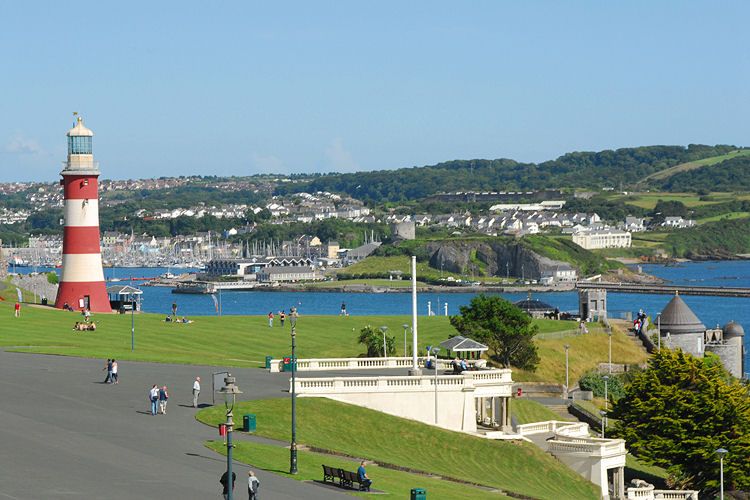
| New geographies of racism |
 |
| Politics and Policy |
 By Jon Burnett By Jon BurnettThe Institute of Race Relations has published the first of three investigations into areas of the country that have experienced increased numbers of racist attacks in recent years. We focused on the city of Plymouth, which, according to the local Racial Equality Council, experiences 50 racist incidents every single day, a city which at one point was earmarked as a BNP stronghold, and which was once described as the ‘city of hate’ because of the sheer volume and ferocity of attacks on asylum seekers. Our report is part of a wider investigation into new geographies of racism, which are emerging in the UK and have become entrenched, in large part, with little or no political acknowledgment.
Originally published by Open Democracy
What’s remarkable about these patterns of racial violence is that they have emerged in the aftermath of the Macpherson Report: a document which forced the issue of racial violence onto the public agenda like no other previously. Remember it? Published in 1999 following an investigation into the racist murder of black teenager Stephen Lawrence and the incompetent response by the police; the report’s findings confirmed what generations of anti-racist activists, campaigners and families such as the Lawrences, who had experienced the realities of policing in the UK, already knew: that there was overwhelming evidence of institutional racism in the criminal justice system.
In 2011, the murder of Stephen Lawrence is back in the media spotlight, with two of the suspects set to stand trial (in one case, re-trial) later in the year. Yet, despite this resurgence of interest in the outcome of this case, many of the messages of the Macpherson Report have been downplayed, waylaid and discarded. Jack Straw — who originally championed the report — has claimed that the Metropolitan Police are “on the whole” no longer institutionally racist. Commentators have questioned whether racism any longer has relevance. And of more interest to policy makers is the promotion of community cohesion and the creation of a set of binding values to cohere the nation and foster a British identity.
Driving this move away from anti-racism is the ongoing attack — instigated by Labour and continued with vigour by the Conservatives — on multiculturalism. According to critics, multiculturalism represents a greater threat to contemporary Britain than racism. But despite — and in some contexts because of — this redefinition of policy practice and debate, the reality is that racist violence continues unabated. At least 89 people have lost their lives as a result of attacks with a racist element since Stephen Lawrence was brutally stabbed to death in April 1993. And whilst in 1993/4, there were 8,779 incidents recorded by the police as racist throughout the UK, in 2009/10 (the last year for which statistics are available), there were 43,426.
Close analysis of these statistics reveals that the nature of racial violence is changing. Historically within the UK, racist attacks have often (but not exclusively) been concentrated in inner-city areas. But what has emerged in the latter part of the twentieth century, and continued in the beginning of the twenty-first century, is a developing pattern of racial violence indicating increasing numbers of attacks in rural areas and smaller conurbations of which Plymouth is one.
In the 1990s Plymouth was a particularly homogenous city with well over 90 per cent of its population classed as white-British. Over the past decade the demography of the city has markedly changed. As well as ‘natural growth’ within existing black and minority ethnic communities, the university has actively sought to recruit more international students. The city became a dispersal area for asylum seekers in 1999. Migrant workers in the city and surrounding areas have become a more integral part of the labour force.
But it is not ‘diversity’ which has led to racist violence. Racial violence appears to be informed by local histories and contexts and the ways in which these interpret and reinterpret racism perpetuated by policies and practices on a national scale. Plymouth has a history bound up with naval conquest. It is a garrison city with a strong military presence and the war footing on which Britain has been over the last decade has particular resonance. It’s also a city which has been ravaged by economic restructuring. In the 1980s the dockyards – the city’s economic heart – were decimated. Unemployment has remained persistently high, exacerbated in recent years by the economic recession and austerity measures.
Inequality in the city is entrenched, with particular wards classed as some of the poorest in the country. An active pursuit of a more flexible economy means, in reality, an economy where employers’ burden of risk is transferred to employees who work in temporary, part-time positions. For many people from black and minority ethnic communities, this means work in jobs such as mini-cabbing or in the service sector where there are known risks of racist violence.
So why explore these new geographies of racism? Because doing so illuminates changes in the make-up and position of the labour force, patterns of migration and the impact of political interventions into the economic and social conditions of the UK’s communities. Because racial violence is one of the most extreme, brutal indicators of the wider racist climate, divisive policies and ruthless marginalisation engendered by successive governments. And because we hope that by uncovering the ‘new geographies of racism’ this, in turn, will pave the way for the forging of new solidarities necessary to inform anti-racist struggles.
Jon Burnett is a researcher at the Institute of Race Relations. |